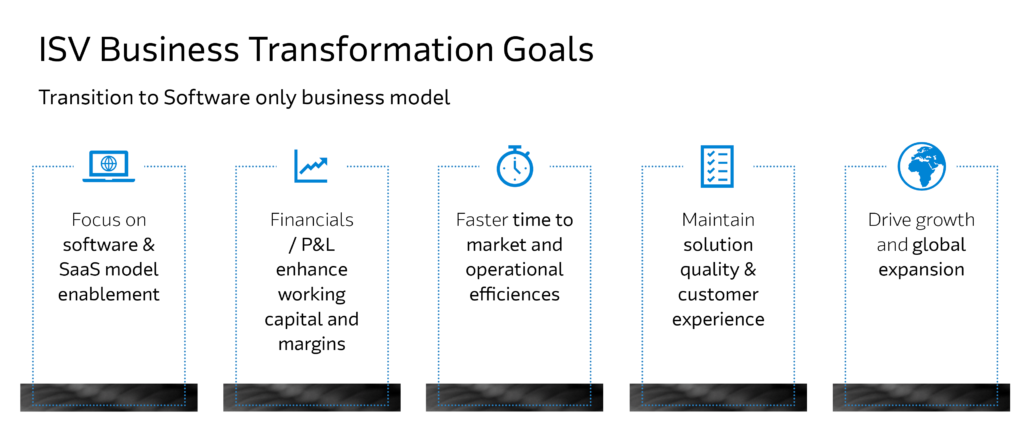Expectations in Software-only Business Transformation - Course Monster Blog

In the hardware and software-only business industries, discussions about changing business strategies are still going on. Software-centric business architectures, SaaS business models, and subscription-based delivery models are increasingly being considered.
However, there are many factors to take into account while changing a business, and each organization will have different goals in mind. However, one of the shared important goals will be to keep an eye on improving the solution quality and customer experience when it comes to independent software vendors (ISVs) and software-focused original equipment manufacturers (OEMs) transitioning into a software-only business.

The goal is to achieve business transformation without significantly affecting the performance of technology solutions or customer service standards. Selecting a partner with international capabilities and experience in delivering a fully integrated hardware product offering is one of the keys to reducing this risk. By doing this, the ISV will be able to supply complete appliance solutions to its customers that have received extensive testing and have been certified for use with their specific hardware platform.
The ideal hardware fulfillment partner must be capable of managing the entire product lifecycle in order to carry out these integration services, and they must also have access to a worldwide logistics and supply chain network in order to guarantee prompt and flexible product delivery and offer post-sale warranty support services. This fulfillment procedure could also be essential for ensuring fast revenue recognition, depending on the ISV’s requirements for software license or subscription activation. This occurs when the licensing or subscription billing for the program depends on the customer deploying the hardware or calls for a reference to the specific hardware identifiers (such as the serial number or MAC address).
This solution delivery method is often an important factor to take into account while working with various OEM and ISV partners over the years who are examining alternative go-to-market methods. It can be tempting for organizations experiencing a business transformation to skip the hardware of the solution and instead rely on channel partners or customers to choose and buy the hardware. They have trust that the software will be installed successfully and that they will be able to quickly find the right hardware. This strategy usually causes delays in the deployment of the solution or may have negative impacts on the performance of software applications. The inherent risks of this strategy to the customer experience and time to revenue are eventually realized by most of ISVs.
When analyzing your go-to-market strategy as part of this ISV transformation process, keep in mind these important elements.
Here at CourseMonster, we know how hard it may be to find the right time and funds for training. We provide effective training programs that enable you to select the training option that best meets the demands of your company.
For more information, please get in touch with one of our course advisers today or contact us at training@coursemonster.com




Comments ()